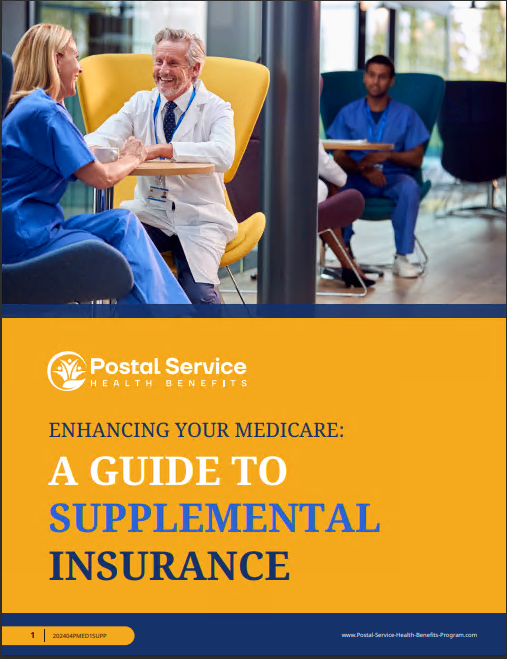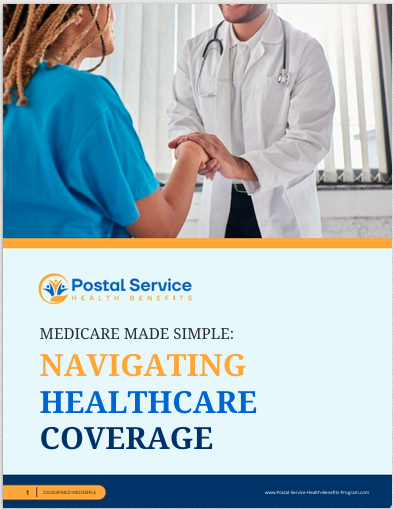Key Takeaways
-
Coinsurance is a cost-sharing mechanism that directly affects how much you pay for healthcare services after meeting your deductible.
-
Understanding how coinsurance works in your Postal Service Health Benefits (PSHB) plan can help you better manage your healthcare expenses and plan for out-of-pocket costs.
What Is Coinsurance and How Does It Work?
Coinsurance is a term you’ll come across frequently in health insurance, including your PSHB plan. It’s a percentage-based system where you and your insurer share the cost of covered medical services. Unlike a copayment, which is a fixed amount, coinsurance is a percentage of the total cost of a service. For example, if your coinsurance rate is 20%, you’ll pay 20% of the bill, and your insurer covers the remaining 80%.
Coinsurance typically kicks in only after you’ve met your deductible for the year. Until then, you’ll be responsible for 100% of your healthcare costs, up to the deductible amount.
Breaking Down the Key Components
Deductible
Your deductible is the amount you must pay out-of-pocket before your coinsurance begins to apply. For PSHB plans, deductibles vary depending on the type of plan you choose, with higher-deductible plans often featuring lower premiums.
Out-of-Pocket Maximum
Coinsurance payments count toward your out-of-pocket maximum, which is the most you’ll pay in a given year for covered healthcare services. Once you hit this limit, your plan covers 100% of your eligible expenses.
Covered Services
Coinsurance applies only to covered services. These are medical services your PSHB plan has agreed to pay for, such as doctor visits, hospital stays, and prescription drugs. Non-covered services will require you to pay the full cost.
Why Coinsurance Matters in PSHB Plans
Understanding coinsurance is critical to making informed decisions about your healthcare. Here are a few ways it impacts your overall costs:
Budget Planning
Knowing your coinsurance rate helps you estimate your potential out-of-pocket costs. This is especially important if you’re managing chronic conditions or planning for a major medical procedure.
Emergency Preparedness
Emergencies can happen at any time. A clear understanding of how coinsurance works ensures you’re financially prepared for unexpected healthcare needs.
Healthcare Choices
Coinsurance may influence your decisions about where to receive care. For example, in-network providers usually cost less because they have negotiated rates with your insurer, which reduces the total amount subject to coinsurance.
How Coinsurance Interacts with Other Cost-Sharing Elements
Copayments
While copayments are fixed fees for specific services (e.g., $20 for a doctor visit), coinsurance is a percentage. Some PSHB plans may require both a copayment and coinsurance for certain services.
Premiums
Your premium is the monthly amount you pay to keep your coverage active. While premiums don’t directly affect your coinsurance, they often correlate with the deductible and coinsurance rates—higher premiums usually mean lower deductibles and coinsurance percentages.
How to Calculate Your Coinsurance Costs
To calculate how much you’ll pay under your coinsurance, follow these steps:
-
Check Your Deductible Status: Ensure you’ve met your deductible for the year.
-
Verify the Total Cost: Obtain the cost of the medical service or procedure.
-
Apply Your Coinsurance Rate: Multiply the total cost by your coinsurance percentage.
For instance, if your coinsurance is 20% and your medical bill is $1,000, you’ll pay $200, and your insurer will cover the remaining $800, provided you’ve met your deductible.
Tips for Managing Coinsurance Costs
Use In-Network Providers
In-network providers have agreed-upon rates with your insurer, which can significantly reduce your coinsurance costs. Always check whether a provider is in-network before scheduling an appointment.
Understand Your Plan’s Coverage
Review your PSHB plan’s benefits booklet or online portal to understand which services are covered and at what rate. This will help you avoid surprises.
Track Your Spending
Keep an eye on how much you’ve spent toward your deductible and out-of-pocket maximum. Many plans offer online tools to help you track this information.
Plan for Major Expenses
If you’re scheduling a major procedure, contact your insurer for a cost estimate. This allows you to budget for the coinsurance and other out-of-pocket costs.
Coinsurance and Preventive Care
Preventive care services, such as vaccinations and screenings, are usually covered at 100% by PSHB plans when you use in-network providers. This means you won’t pay coinsurance for these services, even if you haven’t met your deductible. Taking advantage of these services can help you maintain your health and potentially reduce future medical expenses.
How Coinsurance Affects Prescription Drug Costs
Coinsurance often applies to prescription drugs, particularly those in higher-tier categories. PSHB plans typically categorize medications into tiers based on cost and necessity:
-
Tier 1 (Generic): Lowest coinsurance or copayment.
-
Tier 2 (Preferred Brand): Moderate coinsurance or copayment.
-
Tier 3 (Non-Preferred Brand): Higher coinsurance or copayment.
-
Specialty Drugs: Highest cost-sharing percentage.
Understanding your plan’s drug formulary and utilizing generic options when available can help lower your coinsurance costs.
How to Choose the Right PSHB Plan
Selecting a PSHB plan with a coinsurance structure that fits your needs involves:
-
Evaluating Your Health Needs: Consider your current health status and anticipated medical expenses.
-
Reviewing Cost-Sharing Features: Compare the deductibles, coinsurance rates, and out-of-pocket maximums of different plans.
-
Balancing Premiums and Out-of-Pocket Costs: Decide whether you prefer lower monthly premiums with higher coinsurance or higher premiums with lower coinsurance.
-
Checking Additional Benefits: Some plans offer extras like telehealth services or wellness programs that can add value.
What Happens When You Reach Your Out-of-Pocket Maximum?
Once you’ve reached your out-of-pocket maximum, your insurer will cover 100% of your eligible healthcare costs for the rest of the year. This includes expenses subject to coinsurance, making it a critical safeguard against catastrophic medical bills. However, note that non-covered services and costs for out-of-network providers may not count toward your maximum.
Taking Control of Your Healthcare Costs
Understanding coinsurance is a vital step in managing your healthcare expenses effectively. By knowing how it interacts with deductibles, out-of-pocket maximums, and other cost-sharing features, you can make informed decisions about your care. Whether you’re choosing a PSHB plan or navigating an existing one, staying informed helps you get the most out of your benefits.






